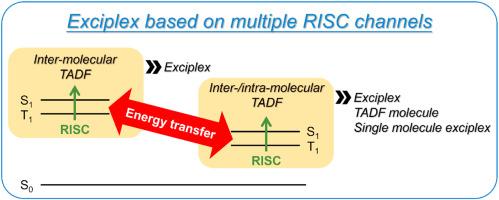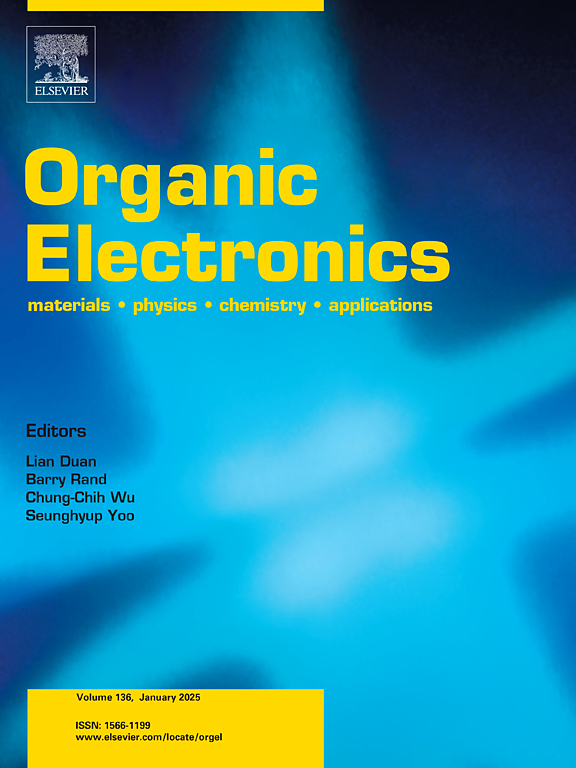基于多个反向系统间穿越通道的高性能热激活延迟荧光赋形剂的最新进展
IF 2.6
4区 工程技术
Q3 MATERIALS SCIENCE, MULTIDISCIPLINARY
引用次数: 0
摘要
在有机发光二极管(OLED)领域,具有热激活延迟荧光(TADF)特性的复合物材料近年来备受关注,因为它们具有高荧光效率的潜力,这主要是通过反向系统间交叉(RISC)过程实现的。通过将非辐射三重态转化为辐射单重态,RISC 过程可以有效调节激子行为,从而获得三重激子并提高发光效率。最近,为了进一步提高 TADF 复合物材料和器件的性能,人们开发出了多重 RISC 策略。本文回顾了这一领域的研究进展。我们根据赋形剂的组成对分子设计策略进行了分类,讨论了基于多重 RISC 策略的高性能 TADF 赋形剂的设计原理和能量收集机制,并展望了其进一步的研究和发展。本综述所总结的渐进式努力可能会对材料设计和器件制造方面的进一步研究有所启发,并促进 OLED 应用的发展。本文章由计算机程序翻译,如有差异,请以英文原文为准。

Recent progress in high-performance thermally activated delayed fluorescence exciplexes based on multiple reverse intersystem crossing channels
In the field of organic light-emitting diodes (OLEDs), exciplex materials with thermally activated delayed fluorescence (TADF) characteristics have garnered significant attention in recent years owing to their potential for high fluorescence efficiency, primarily achieved through the reverse intersystem crossing (RISC) process. By converting non-radiative triplet states to radiative singlet states, the RISC process can effectively regulate exciton behavior, resulting in the harvest of triplet excitons and the improvement of luminescence efficiency. Recently, multi-RISC strategies have been developed to further enhance the performance of TADF exciplex materials and devices. In this paper, we review these research progress in this area. We classify molecular design strategies according to the composition of exciplexes, discuss the design principles and energy-harvesting mechanism of high-performance TADF exciplexes based on multi-RISC strategies, and prospect their further research and development. The progressive endeavors summarized in this review may inspire further research on material design and device fabrication, and promote the development of OLED applications.
求助全文
通过发布文献求助,成功后即可免费获取论文全文。
去求助
来源期刊

Organic Electronics
工程技术-材料科学:综合
CiteScore
6.60
自引率
6.20%
发文量
238
审稿时长
44 days
期刊介绍:
Organic Electronics is a journal whose primary interdisciplinary focus is on materials and phenomena related to organic devices such as light emitting diodes, thin film transistors, photovoltaic cells, sensors, memories, etc.
Papers suitable for publication in this journal cover such topics as photoconductive and electronic properties of organic materials, thin film structures and characterization in the context of organic devices, charge and exciton transport, organic electronic and optoelectronic devices.
 求助内容:
求助内容: 应助结果提醒方式:
应助结果提醒方式:


